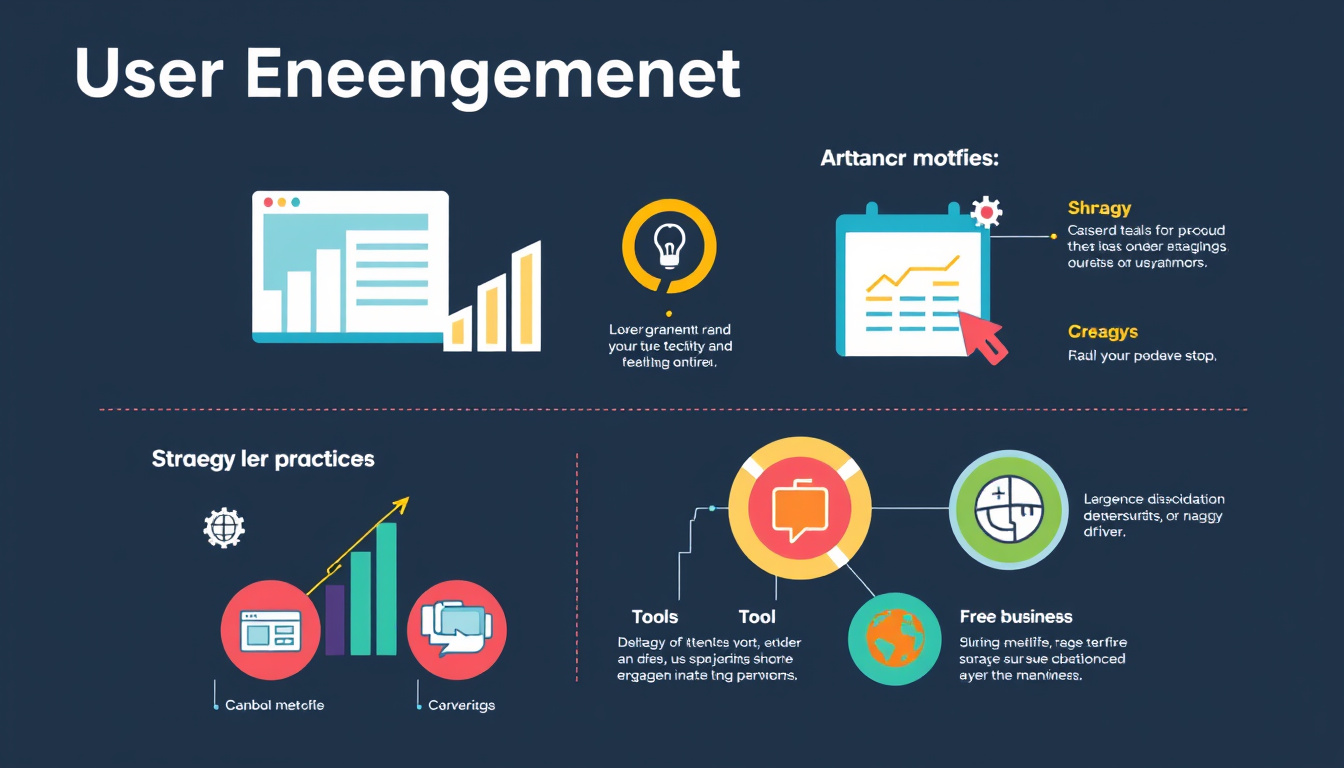In today’s competitive landscape, tracking engagement metrics is crucial for optimizing user experience. These metrics help businesses understand how users interact with their products or services, enabling them to refine their offerings and enhance customer satisfaction. This article explores key engagement metrics, their significance, and how to effectively track and utilize them for better user engagement.

Understanding Engagement Metrics
Engagement metrics are quantitative measures used to evaluate the interactions a user has with a brand, product, or service. These metrics inform businesses about user behavior, preferences, and areas for improvement, facilitating data-driven decision-making. By analyzing engagement metrics, companies can tailor their marketing strategies, improve user interfaces, and ultimately create a more engaging user experience.
Key Engagement Metrics to Track
-
Daily, Weekly, and Monthly Active Users (DAU, WAU, MAU)
These metrics assess the number of unique users who engage with a product over specific time frames—daily, weekly, and monthly. Tracking DAU, WAU, and MAU provides insights into overall product usage trends and user retention. A higher number of these metrics indicates strong user engagement and product viability. -
Average Session Duration
Measuring how long users spend on your site or application reveals the degree of engagement. A longer session duration typically correlates with a high-quality user experience, suggesting that content is resonating with the audience. This metric can be monitored through tools like Google Analytics, which calculate average session length automatically. -
Conversion Rate
The conversion rate indicates the percentage of users who complete a desired action, such as signing up for a newsletter or making a purchase. This metric is pivotal for evaluating the effectiveness of marketing campaigns and the user interface. High conversion rates usually reflect well-designed user journeys that are in line with user expectations. -
Page Views and Time on Page
Page views measure how many times a page on your site is viewed, while time on page tracks how long users stay on that page. Both metrics help identify which content is most engaging or useful. Monitoring these metrics can help pinpoint content that needs improvement or optimization. -
Bounce Rate
Bounce rate signifies the percentage of visitors who leave a site after viewing only one page. A high bounce rate may indicate that users aren’t finding what they expect or that the landing page fails to engage them adequately. Understanding bounce rate in conjunction with other metrics like scroll depth can provide a clearer picture of user engagement. -
Net Promoter Score (NPS)
NPS gauges customer loyalty and satisfaction by asking users how likely they are to recommend a product to others. A high NPS suggests a positive user experience and indicates areas where the product meets or exceeds expectations. Collecting qualitative feedback alongside NPS can provide insights into specific aspects users appreciate or find lacking. -
Scroll Depth
This metric measures how far down a page users scroll, indicating whether users are consuming content effectively. Low scroll depth can highlight areas where adjustments are needed, such as content formatting or placement. -
Feature Usage Rate
Analyzing how often specific features are used can provide insights into which functionalities are deemed valuable by users. This metric can inform product development and updates, ensuring that enhancements align with user needs.
Tools for Tracking Engagement Metrics
Several tools can help track engagement metrics effectively:
-
Google Analytics: A robust platform for tracking website traffic, session duration, page views, bounce rate, and user demographics.
-
Hotjar: Provides visual insights through heatmaps and session recordings, allowing you to see where users click, scroll, and navigate.
-
Mixpanel: Focuses on analyzing user interactions with a product and tracking individual user behaviors over time.
-
Survey Tools (e.g., SurveyMonkey): Useful for collecting qualitative data, such as customer satisfaction and Net Promoter Scores.
Best Practices for Engagement Metrics Tracking
-
Define Goals: Establish clear goals for what you want to achieve with your metrics. Are you trying to improve retention, increase conversions, or enhance customer satisfaction?
-
Segment Your Data: Break down metrics by user segments, such as demographics, geographic location, or behavior patterns. This approach will yield deeper insights and highlight specific areas for improvement.
-
Combine Qualitative and Quantitative Data: Use qualitative insights from surveys and feedback along with quantitative metrics for a complete understanding of user engagement.
-
Regularly Evaluate and Adjust: Continuous review of engagement metrics is essential. Regularly analyze the data, identify trends, and adjust your strategies accordingly.
-
Test and Optimize: Implement A/B testing to evaluate different elements of your website or app. This can help determine which variations drive better user engagement.
Conclusion
Effective engagement metrics tracking is instrumental in understanding and improving user experiences. By focusing on key metrics, utilizing appropriate tools, and adopting best practices, businesses can refine their strategies to foster deeper connections with users, ultimately driving long-term success. Tracking engagement metrics is not just about gathering data; it’s about using insights to create user experiences that delight and engage.
—————————————————-
Are you tired of the 9-to-5 grind? Unlock the secrets to online income generation. GetIncomeNow.com is your roadmap to financial freedom. We reveal proven methods, insider tips, and cutting-edge strategies to help you achieve your income goals. Start your journey to financial independence today!
